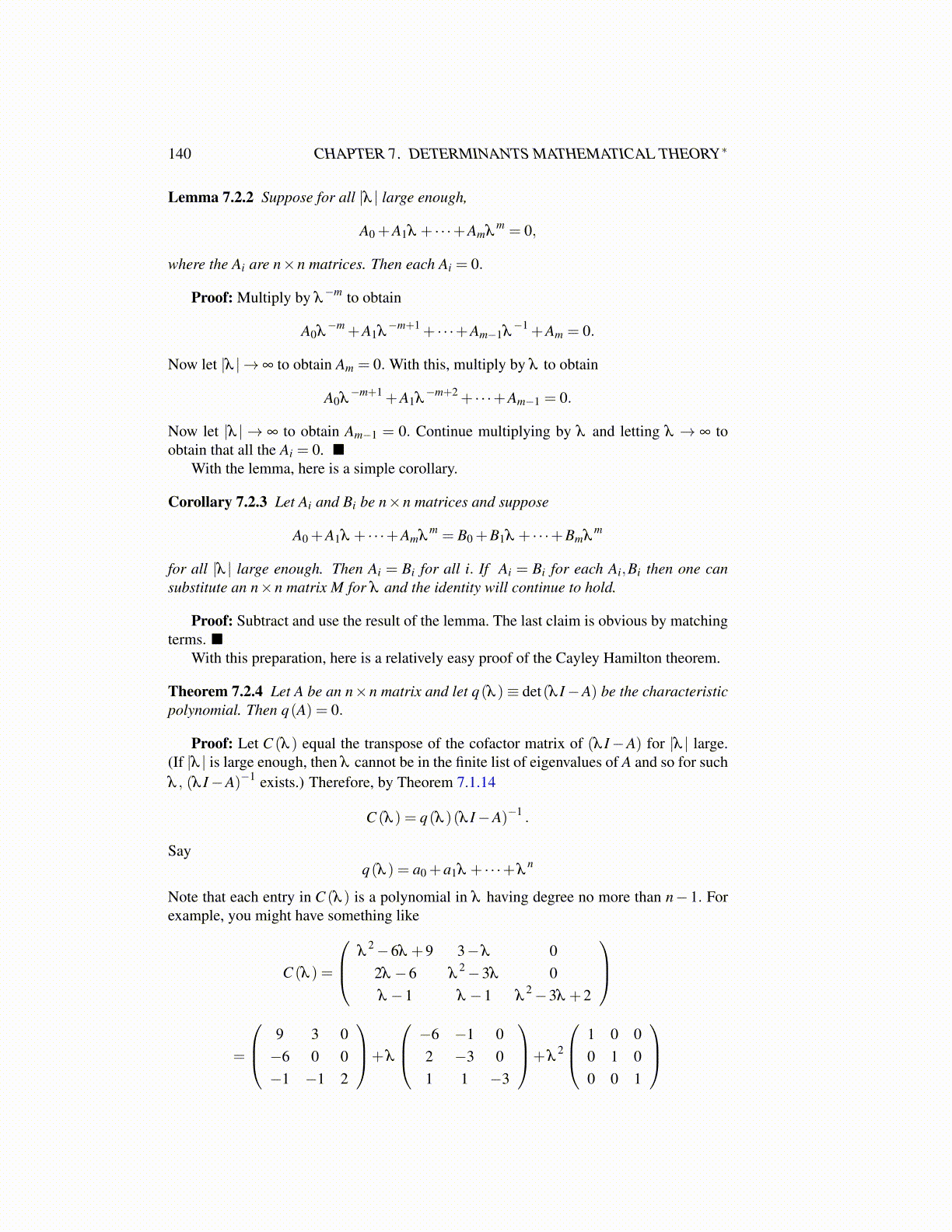
140 CHAPTER 7. DETERMINANTS MATHEMATICAL THEORY∗
Lemma 7.2.2 Suppose for all |λ | large enough,
A0 +A1λ + · · ·+Amλm = 0,
where the Ai are n×n matrices. Then each Ai = 0.
Proof: Multiply by λ−m to obtain
A0λ−m +A1λ
−m+1 + · · ·+Am−1λ−1 +Am = 0.
Now let |λ | → ∞ to obtain Am = 0. With this, multiply by λ to obtain
A0λ−m+1 +A1λ
−m+2 + · · ·+Am−1 = 0.
Now let |λ | → ∞ to obtain Am−1 = 0. Continue multiplying by λ and letting λ → ∞ toobtain that all the Ai = 0. ■
With the lemma, here is a simple corollary.
Corollary 7.2.3 Let Ai and Bi be n×n matrices and suppose
A0 +A1λ + · · ·+Amλm = B0 +B1λ + · · ·+Bmλ
m
for all |λ | large enough. Then Ai = Bi for all i. If Ai = Bi for each Ai,Bi then one cansubstitute an n×n matrix M for λ and the identity will continue to hold.
Proof: Subtract and use the result of the lemma. The last claim is obvious by matchingterms. ■
With this preparation, here is a relatively easy proof of the Cayley Hamilton theorem.
Theorem 7.2.4 Let A be an n×n matrix and let q(λ )≡ det(λ I−A) be the characteristicpolynomial. Then q(A) = 0.
Proof: Let C (λ ) equal the transpose of the cofactor matrix of (λ I−A) for |λ | large.(If |λ | is large enough, then λ cannot be in the finite list of eigenvalues of A and so for suchλ , (λ I−A)−1 exists.) Therefore, by Theorem 7.1.14
C (λ ) = q(λ )(λ I−A)−1 .
Sayq(λ ) = a0 +a1λ + · · ·+λ
n
Note that each entry in C (λ ) is a polynomial in λ having degree no more than n− 1. Forexample, you might have something like
C (λ ) =
λ2−6λ +9 3−λ 02λ −6 λ
2−3λ 0λ −1 λ −1 λ
2−3λ +2
=
9 3 0−6 0 0−1 −1 2
+λ
−6 −1 02 −3 01 1 −3
+λ2
1 0 00 1 00 0 1